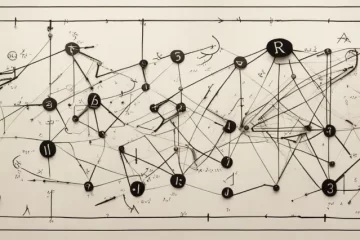Master the Art of Reading with How To Read A Book by Mortimer J. Adler


In today’s fast-paced digital era, where the majority of our time is spent scrolling through social media feeds and clicking on flashy headlines, the art of reading seems to have faded into the background. However, Mortimer J. Adler, in his iconic book “How to Read a Book,” reminds us that the act of reading is not just about decoding words on a page – it is an art, a skill that can be cultivated and refined. In this timeless masterpiece, Adler reveals the secrets of becoming a proficient reader, unlocking the doors to a world full of knowledge, enrichment, and endless possibilities. So, whether you are a novice seeking guidance or a seasoned bookworm looking to deepen your reading experience, join us on a journey to rediscover the lost art of reading and reignite your love for the written word.
What is Reading
Reading is the process of looking at and understanding written or printed words. It involves decoding and comprehending the meaning of the words, sentences, and paragraphs. Reading can be done silently or aloud, and it is an essential skill for communication, learning, and acquiring information. It is often considered a fundamental pillar of education and literacy.
Why is Reading Important to Us
Reading is important to us for several reasons:
1. Knowledge and Information: Reading allows us to gain knowledge and information about various subjects. Whether it’s through books, newspapers, or online articles, reading helps us stay updated with current affairs, discover new ideas, and learn about different cultures and perspectives.
2. Cognitive Development: Reading improves cognitive skills such as critical thinking, problem-solving, and concentration. It enhances our ability to analyze and interpret information, expanding our understanding and enabling us to make informed decisions.
3. Communication Skills: Reading improves our vocabulary, language skills, and comprehension. It helps us become more articulate and express our thoughts and ideas effectively. Reading also builds empathy by exposing us to different characters and situations, allowing us to understand and connect with others better.
4. Imagination and Creativity: Reading stimulates our imagination and creativity. It transports us to different worlds, introduces us to vivid characters, and presents us with complex storylines. This imaginative experience can inspire us in our own lives and spark creativity in various aspects, from writing to problem-solving.
5. Mental Stimulation: Reading actively engages our brain and helps keep it sharp. Research suggests that reading can slow down cognitive decline and reduce the risk of conditions like dementia. Regular reading exercises our brain, improving memory, focus, and overall mental agility.
6. Stress Reduction and Relaxation: Reading can be a form of escapism and a source of relaxation. It allows us to detach from daily stressors and immerse ourselves in a different reality. Reading can provide entertainment, comfort, and a break from the demands of everyday life.
Overall, reading is essential for personal growth, emotional well-being, and intellectual development. It enriches our lives, expands our horizons, and empowers us with knowledge and understanding.
Unlocking Reading from How To Read A Book

How To Read A Book Introduction
“How To Read A Book” by Mortimer J. Adler is a practical guide to effectively approaching and comprehending books, regardless of their subject matter or complexity. The book is divided into four parts, each providing crucial information on reading and understanding texts.
In Part I, Adler introduces the concept of active reading, proposing that there are different levels of reading. He outlines the importance of having a purpose for reading and provides strategies to identify the type of book and the appropriate reading approach, whether it be elementary, inspectional, analytical, or syntopical reading.
Part II focuses on the inspectional reading method, which is utilized when time is limited or when one needs a general understanding of a book’s content. Adler explains techniques such as skimming, reading the table of contents, and examining the index and preface to gain insight into the book’s structure and the author’s main ideas.
Part III delves into the analytical reading method, which involves a more thorough and active interaction with the text. Here, Adler emphasizes the importance of highlighting, taking notes, and engaging in a dialogue with the author, challenging assumptions and critically evaluating arguments. Additionally, he provides a comprehensive set of questions to aid in understanding the book’s message.
Finally, Part IV introduces syntopical reading, employed when multiple works on a particular subject are read together. Adler guides readers on how to compare and analyze different authors’ arguments, identify contradictions and consistencies, and construct one’s understanding based on varied perspectives.
Throughout the book, Adler presents numerous examples and practical exercises to demonstrate the application of the reading techniques discussed. By the end, readers will have a solid framework for reading effectively, extracting valuable insights, and engaging with books at a deeper level.
Learning Reading Methods
In the book “How to Read a Book: The Classic Guide to Intelligent Reading” by Mortimer J. Adler and Charles Van Doren, the authors discuss several reading methods. Here are some of the key methods mentioned in the book:
1. Elementary Reading: This is the most basic level of reading where one comprehends the literal meaning of the text and can understand the words and sentences.
2. Inspectional Reading: This method is useful when you have limited time or want to quickly get an overview of a book. It involves skimming through the book, reading the table of contents, index, preface, and chapter summaries. It helps you decide if the book is worth a more thorough reading.
3. Analytical Reading: This method involves a deeper and critical analysis of the text. It requires breaking down the content into smaller sections, asking questions about the author’s arguments, identifying key concepts and terms, and understanding the structure and organization of the book.
4. Syntopical Reading: This method is used when you want to compare and contrast multiple books on a particular subject. It involves reading different books and forming your own understanding by comparing different arguments, examining differing viewpoints, and building your own analysis by using the various sources available.
The book also provides guidance on how to engage in active reading, taking notes, organizing information, and developing a systematic approach to reading various types of books.
Note: This is just a brief overview of some reading methods mentioned in the book. For a more detailed understanding, it is recommended to read the book “How to Read a Book” by Mortimer J. Adler and Charles Van Doren.
How To Read A Book Quotes
How To Read A Book quotes as follows:
1. “The art of reading is divided into two parts: first, the art of finding and evaluating books, then the art of reading them.”
2. “A good book, at any level of reading, is one that both challenges and rewards its readers.”
3. “Reading a book requires deep engagement with the text, active questioning, and development of one’s own opinions.”
4. “Every book has a central point or theme, and the reader must identify it in order to fully understand and grasp the author’s message.”
5. “Reading is a skill that can be developed and honed through practice, just like any other skill.”
6. “Active reading involves asking questions, making connections, and critically analyzing the text.”
7. “When reading a book, one should strive to understand not only the author’s words, but also their intentions and underlying arguments.”
8. “Reading with a purpose helps the reader to stay focused and engaged in the text, leading to a more fulfilling experience.”
9. “A reader should not be afraid to challenge the author or disagree with their ideas, but should do so with a solid understanding of the text.”
10. “The ultimate goal of reading is not simply to finish a book, but to gain knowledge, insight, and personal growth from the reading experience.”

More Books About How To Read A Book by Mortimer J. Adler
1. “I’d Rather Be Reading” by Anne Bogel
In “I’d Rather Be Reading,” Anne Bogel explores the various aspects of bookworm culture and shares her personal experiences as a passionate reader. While not specifically focused on reading techniques, Bogel’s intimate and relatable anecdotes will make you feel understood as a book lover. This delightful collection of essays will remind you of why you fell in love with reading in the first place, while offering valuable insights into the joys and challenges of being an avid reader.
2. “Reading Magic” by Mem Fox
Especially suitable for parents, teachers, and caregivers, “Reading Magic” by Mem Fox explains how reading aloud to children can significantly impact their literacy development. With practical tips, anecdotes, and valuable advice, Fox dives into the art of reading aloud and provides strategies for fostering a love of books in young readers. By following her guidance, you’ll enhance your ability to engage with literature and better appreciate the power of storytelling.
3. “The Pleasures Of Reading In An Age Of Distraction” by Alan Jacobs
In a digitally distracted world, Alan Jacobs invites readers to rediscover the immense joy of deep and focused reading. Jacobs encourages meaningful engagement with literature, offering insightful strategies on how to reclaim our attention and cultivate a richer reading experience. By exploring the challenges of the digital age, “The Pleasures Of Reading In An Age Of Distraction” provides invaluable guidance for readers seeking to enrich their reading habits and find solace in the world of books.
4. “The Art of Reading” by Dmitry Chernikov
“The Art of Reading” guides readers on a journey to transform reading from a mere habit into a deliberate practice. Dmitry Chernikov explores different reading techniques and explains how to approach different genres, seeking to deepen our understanding of the texts we encounter. With this book, you’ll learn practical tools to dissect and absorb information more effectively, enhancing your critical thinking and analytical skills.
5. “How to Read Literature Like a Professor” by Thomas C. Foster
Thomas C. Foster’s “How to Read Literature Like a Professor” is an exceptional guide that unlocks the hidden layers of classic and contemporary works. Foster offers readers a road map to decipher the symbols, themes, and structures that writers use to convey their intentions. By learning to read between the lines, you’ll develop an enhanced appreciation for literature, where every detail holds deeper meaning and connection.
These recommended books delve into various aspects of reading, offering practical tips, inspirational stories, and theoretical frameworks to enhance your overall reading experience. Whether you seek to rediscover the joy of reading, engage more deeply with literature, or develop effective reading techniques, these titles will undoubtedly enrich your literary journey.



0 Comments